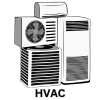In this article, we discuss the engine performance and efficiency in depth.
In this article:
What Is Engine Performance?
Engine performance refers to the ability of an engine to produce power, respond to throttle inputs, accelerate a vehicle, and perform under varying conditions.
Key indicators include:
✅ Power (kW or hp) — the rate at which the engine can do work.
✅ Torque ( Nm or lbf∙ft) — turning force at the crankshaft.
✅ Acceleration — how quickly the vehicle can increase its speed.
✅ Response — the ability to respond to driver inputs without delay.
✅ Reliability — sustained delivery of power without failure.
What Is Engine Efficiency?
Engine efficiency refers to how well the engine converts the chemical energy in the fuel into mechanical energy.
Key measures of engine efficiency include:
✅ Thermodynamics (thermal efficiency) — percentage of fuel’s energy that converts into useful work.
✅ Fuel consumption (BSFC: Brake-Specific Fuel Consumption) — grams of fuel used per kWh of output power.
✅ Volumetric efficiency — how effectively air enters the combustion chamber.
✅ Combustin completeness — how completely the air-fuel mixture is burned.
Factors Affecting Engine Performance
- Design of Combustin Chamber:
- Shape, compression ratio, and number of valves influence airflow, mixture formation, and combustion.
- Valve Timing and Lift:
- Higher lift or faster opening can aid airflow, improving power.
- Intake Air Quality and Quantity:
- Cold, dense air contains more oxygen, yielding greater power.
- Turbocharging or supercharging increases air mass flow.
- Fuel Quality and Air/Fuel Ratio:
- Proper mixture (typically 14.7:1 for gasoline) guarantees complete combustion.
- Ignition Timing:
- Precise spark initiation maximises pressure during power stroke.
- Friction and Heat Loss:
- Frictinal resistance and poor lubrication can consume power.
- Backpressure in Exhaust System:
- Higher backpressure impedes flow of exhaust and reduces engine power.
Factors Affecting Engine Efficiency
✅ Compression Ratio:
Higher compression typically increases thermal efficiency (until knocking occurs).
✅ Heat Loss:
Higher wall, liquid, or radiation losses diminish the portion of energy convertible to mechanical power.
✅ Friction:
Higher internal resistance from pistons, rings, or bearings drops output.
✅ Pump Loss:
Effort needed to draw air in and push exhaust out (pumping) reduces net power.
✅ Incomplete Combustin:
If mixture isn’t completely burned, energy is wasted.
✅ Timing and Air/Fuel Ratio:
Degraded by poor spark or poor mixture control — reducing combustion’s completeness.
Measures to Improve Performance and Efficiency
✅ Higher compression ratio (with high-octane fuel)
✅ Variable valve timing (VVT) to match engine rpm
✅ Turbocharging or supercharging for greater air delivery
✅ Improving airflow (high-flow air filter, intake manifold design)
✅ Reducing resistance (lower-frictinal materials, low-viscosity lubricants)
✅ Installing high-energy ignition systems (with strong spark)
✅ Using direct injection for more accurate air-fuel mixture control
✅ Installing catalytic converters with low backpressure
✅ Maintaining proper engine health (regular service, clean air filter, proper spark plugs)
Summary
- Engine performance focuses on power delivery, torque, and vehicle acceleration.
- Engine efficiency focuses on turning as much of the fuel’s energy into mechanical power while minimizing waste.
- Proper design, maintenance, and control strategies can maximize both.
Other courses:



